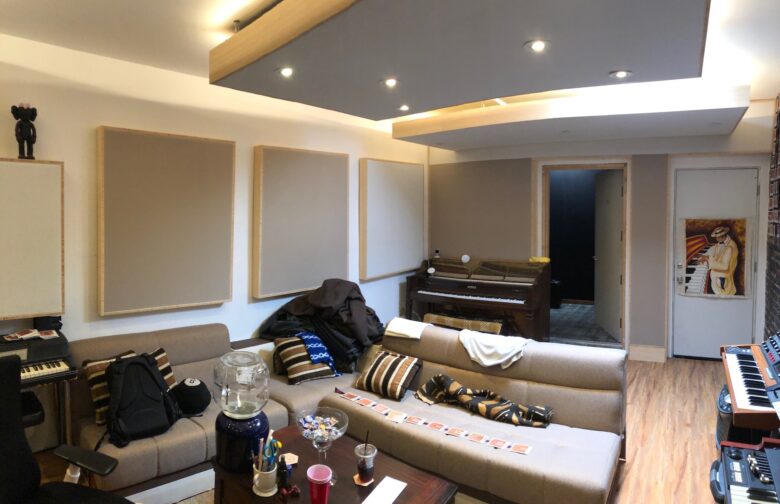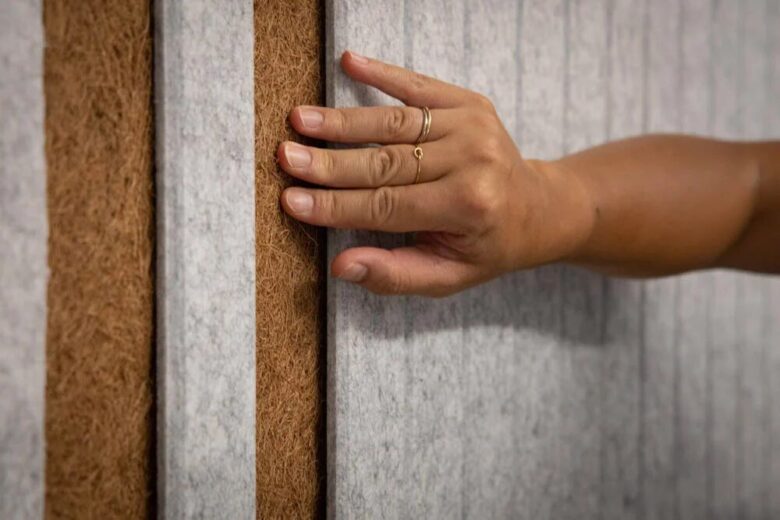Before diving into the installation process, it’s essential to understand what acoustic panels are and their role in sound management. Acoustic panels are specialized panels used to absorb sound and reduce noise and echo in a room.
They come in various materials, sizes, and designs, each catering to different acoustic needs.
Contents
- Choosing the Right Panels
- Prepping the Room
- Tools and Materials Needed
- Marking and Measuring
- Installation Techniques
- DIY vs. Professional Installation
- Acoustic Panel Placement Examples
- Panel Arrangement Tips
- Soundproofing Considerations
- Custom Panel Design
- Budget Considerations
- Adhesive Application
- Using Mounting Brackets
- Screw-In Method
- Finishing Touches
- Room Acoustic Testing
- Maintenance and Care
- Conclusion
Choosing the Right Panels
Selecting the right ones is crucial for optimal sound quality. The choice depends on the room’s purpose, size, and existing acoustics. For a music studio, denser panels might be ideal, while a home theater might benefit from a mix of absorptive and diffusive panels.

Source: truthstudios.com
Prepping the Room
Preparation is key to a successful installation. Start by analyzing the room’s acoustics. Identify areas where sound reverberates or echoes. Clean the walls thoroughly, removing dust and debris, as a clean surface ensures better adhesion of the acoustic wall panels.
Tools and Materials Needed
Gather all the necessary tools and materials before beginning the installation. You’ll need a measuring tape, level, pencil, adhesive (specific to the panel type), and possibly a drill, screws, and wall anchors, depending on your installation method.
Marking and Measuring
Accurate marking and measuring ensure a balanced and visually pleasing arrangement of panels. Use a pencil and level to mark the wall where each panel will go.
Pay attention to symmetry and spacing for both aesthetic and acoustic effectiveness.
Installation Techniques
There are various methods to install them, including adhesive, mounting brackets, or direct screwing into the wall. The choice depends on the panel type and wall material.
For temporary installations or rented spaces, adhesive strips might be the best option. Permanent installations in studios often use screws and mounting brackets for added security.

Source:pinterest.com
DIY vs. Professional Installation
Deciding between DIY and professional installation depends on skill level, budget, and project complexity. DIY installations can be cost-effective and satisfying but require careful planning and execution.
Professional installation guarantees expertise, especially for complex setups like large studios or theaters. Professionals can also offer valuable advice on panel placement and room acoustics, ensuring optimal sound quality.
Acoustic Panel Placement Examples
Effective acoustic panel placement can vary depending on the room’s purpose. In a home theater, panels should focus on the walls parallel to the screen and ceiling for optimal sound. In recording studios, place them at reflection points and corners to reduce echo.
For offices or public spaces, strategically place panels to dampen noise without compromising the space’s openness and functionality.
Panel Arrangement Tips
Arranging them effectively is both an art and a science. It’s crucial to balance aesthetic appeal with acoustic functionality. Consider symmetry, color coordination, and room dimensions when placing panels.
Ideally, arrange panels at ear level for maximum sound absorption in key areas. Experiment with different layouts, such as checkerboard or scattered arrangements, to find what best suits the room’s acoustics and your personal style.
Soundproofing Considerations
Soundproofing is an integral aspect of acoustic panel installation. Remember, acoustic panels primarily absorb sound; they don’t block it completely. For enhanced soundproofing, combine panels with other materials like mass-loaded vinyl.
Focus on sealing gaps and covering surfaces where sound leakage is likely, such as windows, doors, and thin walls. Use denser ones for areas requiring more robust soundproofing, such as home theaters or recording studios.
Custom Panel Design
Custom panel design offers a unique opportunity to tailor acoustics to specific needs. Consider factors like room size, intended use, and existing decor. Custom panels can be designed in various shapes, sizes, and colors to fit the room’s aesthetic.
Experiment with different materials like fabric or wood for a more personalized touch. Remember, the design should enhance both the room’s appearance and its acoustic properties.
Budget Considerations
Budget plays a significant role in acoustic panel installation. Costs vary based on panel type, size, design, and installation method. DIY installations can reduce labor costs but might require tools and materials.
Consider a mix of high and low-cost panels to balance budget constraints with acoustic needs. Explore different suppliers and materials for the best price-quality ratio, keeping in mind that effective sound management doesn’t always require a high budget.
Adhesive Application
If using adhesive, apply it evenly on the back of the panel. Press the panel firmly against the wall, ensuring it aligns with your markings. Hold it in place for a few minutes to allow the adhesive to set.
Using Mounting Brackets
Mounting brackets provide a secure and removable installation method. Attach the brackets to the wall, ensuring they are level and aligned with your markings. Then, hang the panels onto the brackets. This method allows easy repositioning or removal of panels.

Source: ruitechpanel.com
Screw-In Method
For a more permanent installation, screwing them directly into the wall is a viable option. This method requires drilling holes into the wall and using wall anchors for a secure fit. Ensure the screws are not overtightened to avoid damaging the panels.
Finishing Touches
Once all panels are installed, step back and inspect the arrangement. Make any necessary adjustments to ensure a visually appealing and symmetrical layout. Clean up any residue from the installation process.
Room Acoustic Testing
After installation, test the room’s acoustics. Play different types of sound to assess the effectiveness of the panels. Adjust the positioning or add more panels if necessary to achieve the desired acoustic quality.
Maintenance and Care
Acoustic panels require minimal maintenance. Regular dusting and occasional vacuuming are usually sufficient to keep them in good condition. Avoid using harsh chemicals or water, as they can damage the material of the panels.

Source: baswana.com
Conclusion
Installing acoustic panels can dramatically improve the sound quality of a room. Whether it’s for a professional recording studio, a home theater, or an office space, the correct installation and positioning of acoustic panels play a vital role in achieving acoustic brilliance.
With the right tools, materials, and techniques, you can effectively install acoustic panels and enjoy a superior auditory experience in your space.
